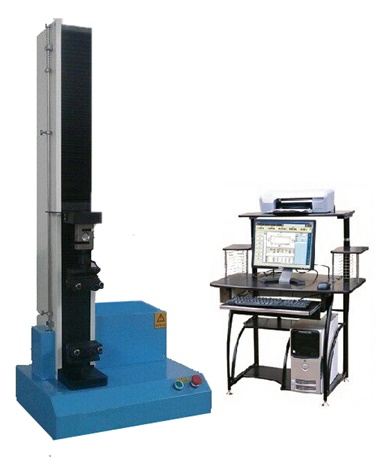1 The first is the force value sensor of the tensile testing machine. Because the quality of the sensor determines the accuracy of the testing machine and the stability of the measuring force. At present, the small force value of the
tensile testing machine on the market generally uses the S-type sensor, and the value of the force is generally used. Spoke-type sensors, the inside of the sensor is generally resistance strain gauge type. If the accuracy of the strain gauge is not high or the anti-aging ability of the rubber used for fixing the strain gauge is not good or the material of the sensor is not good, the accuracy and service life of the sensor will be affected. Zhongshi Instrument Technology Co., Ltd. has high sensor accuracy, good linearity and stable performance, and will not change for decades.
2 The second is the ball screw that drives the movement of the sensor. If the screw has a gap, the test data will be tested in the future, and the maximum deformation and elongation after the test will be directly affected. At present, the tensile testing machine on the market has a T-shaped ordinary screw, so that the gap is relatively large, and the second is that the friction is relatively short and the service life is short. The screw used by Zhongshi Instrument Technology Co., Ltd. is high-precision in Germany. The gapless ball screw has a surface hardening hardness of HRC58-62 and a service life of several decades. And ensure that the accuracy is unchanged.
3 Again, the transmission system of the
tensile testing machine. At present, the tensile testing machine transmission system on the market uses reducers, and some use ordinary belts. The main drawbacks of these two transmission methods are: the former requires regular lubrication, and the latter It can not guarantee the synchronization of the transmission affects the test results. The medium-strength tensile testing machine guarantees the synchronous precision of the transmission, high transmission precision, high efficiency, stable transmission, low noise, and long service life without maintenance.

4 Again, the power source (motor) of the tensile testing machine is also called the motor. At present, the
tensile testing machine on the market uses ordinary three-phase motors or variable frequency motors. This type of motor uses analog signal control, which has slow control response and inaccurate positioning. The speed regulation range is narrow, there is no high speed at high speed or low speed, and there is no high speed, and the speed control is not accurate. The control mode of the instrument is full digital pulse control, the speed range is wide, the control positioning is accurate, and the response is fast. Full-scale speed control is accurate and has a long service life of up to several decades without maintenance.
5 Finally, the measurement and control system (that is, software) of the universal testing machine.
点击图标下载 App


